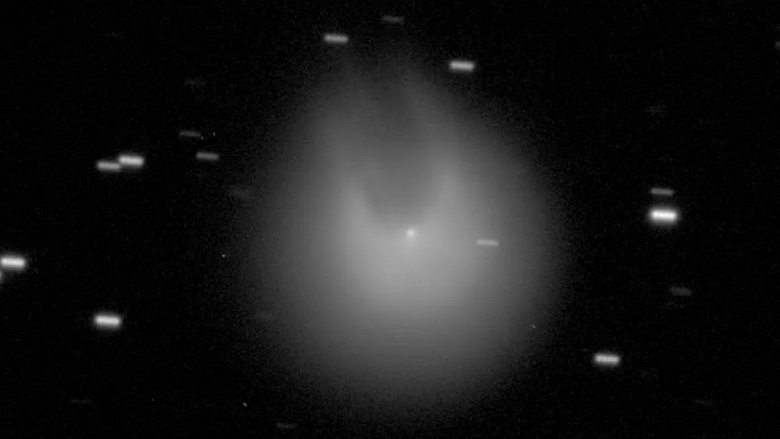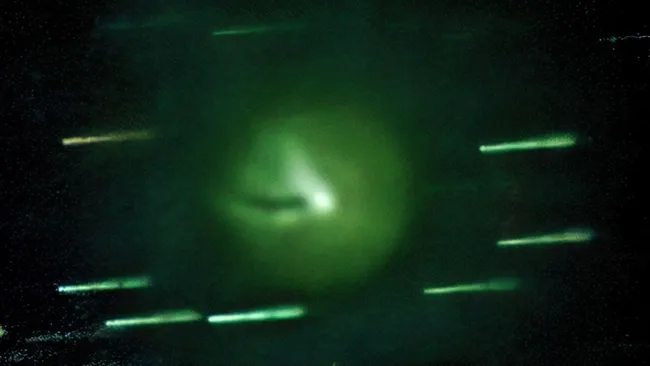And maybe it's forever
The short-period Comet Pons-Brooks (12P/Pons-Brooks) of the Halley family is moving toward the closest point to Earth in its 71-year orbit through the Solar System. And last week, after her most powerful “outbreak”, she still did not grow her characteristic “horns”, thanks to which she initially acquired her ominous nickname.
However, astronomers noticed several new features of the comet, including a rare green hue and a mysterious “shadow.”
Before this, the comet had three major eruptions: July 20, October 5, October 31. Each time, her coma took on an irregular shape with a “dark streak” that made it look like it had grown a pair of horns.

On November 14, at 12P, another major eruption occurred – the largest to date. Astronomers watched as the comet temporarily became more than 100 times brighter than normal in the following days. But this time the characteristic horns did not appear. It is currently unclear why the antlers disappeared. But frequent eruptions may have destroyed the recess that blocked the outflow of cryomagma. During the third eruption on Halloween, the comet's horns were much less distinct than in the first two eruptions, suggesting that the notch may have already been damaged by the comet's first two outbursts. Astronomers assume that the comet will lose its characteristic shape forever.
The fact is that 12P/Pons-Brooks is a cryovolcanic (or cold volcanic) comet. The comet's nucleus, a mixture of ice, dust and gas, is surrounded by a fuzzy cloud of gas called a coma. Unlike most other comets, the gas and ice inside the nucleus are concentrated so strongly that the celestial object can “explode”, expelling its icy contents, known as cryomagma, through cracks in the core shell.
On April 24, 2024, the comet will reach its closest point to the Sun (perihelion), and then fly around the star and enter the outer region of the Solar System. The comet will approach Earth on June 2, 2024, and will most likely be visible to the naked eye. The comet likely won't return to the inner solar system until 2094.

